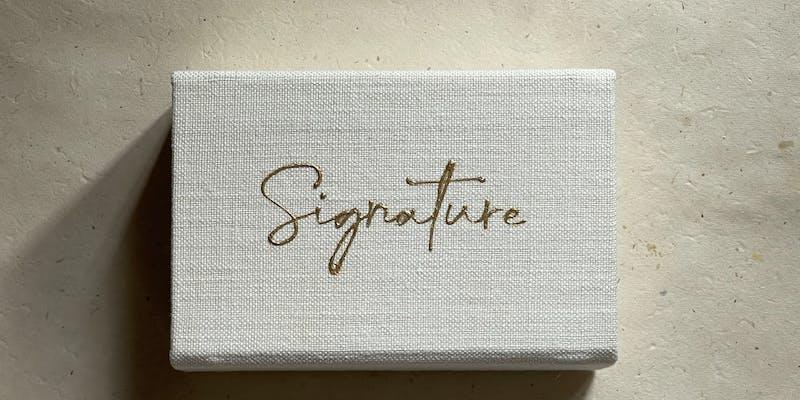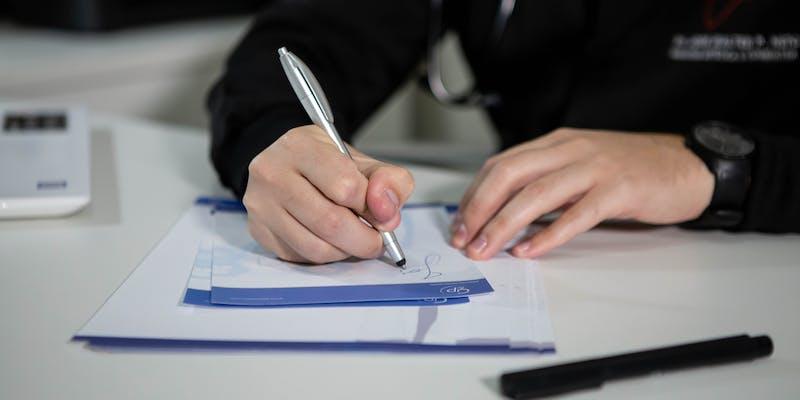Writing a Personal Check in Six Simple Steps
Nov 22, 2023 By Triston Martin
Writing a personal check might seem outdated in today's technology-driven financial environment, yet it's a skill that retains its relevance, particularly in personal finance and specific business contexts. Understanding how to fill out a check correctly is vital.
1. Date the Check
Dating a check, specifically in the top right corner, is more than a mere formality. It plays a crucial role in financial transactions. The date on the check serves as a record, indicating the day the check was issued.
This information is essential for both personal checks record-keeping and bank processing. Banks rely on the date to determine when a check becomes valid and helps track and reconcile accounts.
When you write a personal check, it is critical to use the current date. This helps in avoiding the complexities associated with postdated checks. A postdated check, one written with a future date, can lead to potential confusion and delay in banking processes.
For example, a check dated ahead might only be cashable on that date, which could complicate transactions for both the payer and the recipient. In 2018, the Federal Reserve found that 14.5 billion checks were used for payments and cash withdrawals in the U.S. despite declining usage.
2. Write the Recipient's Name
In the "Pay to the Order of" line, you specify to whom the check is addressed – an individual or an organization. This part of the check is critical because it designates the intended recipient of the funds. This clarity is vital for the bank's check processing and ensures the money reaches the right hands. A check with an incorrect or incomplete name can lead to rejection or delays, creating inconvenience and potential financial complications.
Accuracy is vital when filling out this section of the check. Ensure that you spell the recipient’s name correctly and completely. This means including the first and last name without abbreviations for personal checks. If it's an organization, the total registered name should be used. This reduces the risk of the check being declined due to name discrepancies.
According to recent banking reports, errors in check details, including incorrect payee names, account for a significant percentage of check processing errors. Precise and careful writing can significantly reduce these incidents, ensuring smoother transactions.
3. Filling in the Amount in Numbers on a Personal Check
When you write a personal check, one of the crucial steps involves accurately entering the payment amount in numeric form. This part of the check-writing process ensures clarity and precision in financial transactions. Let's break down this step:
Step-by-Step Guidance
- Locating the Correct Space: You'll find a small box to the right of the recipient's name. This is where you'll write the amount.
- Entering the Amount: Write down the payment amount here. For instance, if you're paying $123.45, you'll write it just as it appears here, including the decimal point.
- Why Precision Matters: This numeric amount is a quick reference for banks and recipients. It must be accurate and precise to ensure the payment amount is clear.
Key Considerations
- Begin writing as close to the left-hand side of the box as possible. This approach minimizes the risk of any unauthorized alterations to the amount.
- Even if the amount is a round number, like $100, write it as $100.00. This practice ensures that the amount cannot be easily changed.
- The numeric amount should match the written amount you'll enter in the next step.
According to a survey by the Federal Reserve, the use of write a personal check has been declining, with a 7% drop annually. Despite this trend, understanding how to fill out check amounts correctly remains essential when checks are needed.
4. Writing the Amount in Words on a Personal Check
Writing the amount in words on a personal check is a safeguard that clarifies the amount you intend to pay. This step is as vital as writing the numeric amount and serves as a legal reinforcement of the payment specified. Do it like:
- Location: Below the recipient's name, there's a line where you'll write the amount in words.
- How to Write It: If the how to fill out check amount is $123.45, write “one hundred twenty-three and 45/100.” Ensure it matches the numeric amount.
- Legal Importance: The written amount is the legally recognized check amount. It's what banks primarily refer to during processing.
5. Filling Out the Memo Line on a Personal Check
The memo line on a personal check may seem insignificant, but it matters. You can write a note or reminder about why you're writing the check in the lower left corner. Write "April Rent." for April rent. This is especially helpful when tracking expenses or when the check is for a bill payment or birthday gift.
A memo doesn't legally change how the check can be used, but it's a valuable reference for you and the recipient. It helps to remember why a check was issued, which is helpful for budgeting and financial tracking. About 70% of people remember payments better with a straightforward memo.
6. Signing the Check

Signature is the final, most crucial step in writing a personal check. Your signature in the bottom right corner confirms that you will pay the amount on the statement to the named person or organization. With your signature, the check is valuable.
A check signature isn't just a formality. This legally binding mark authorizes the bank to process how to fill out check. Consistency in your signature is crucial. Signature anomalies cause 30% of check-related banking issues. A consistent signature reduces security worries and checks rejections. Signatures on financial transactions are your fingerprint, and banks check them for fraud and identity theft.
Tips For Writing a Personal Check
- Balancing Your Checkbook: Keep track of each check you write in the check register. This practice helps you monitor your spending and balance.
- Security Measures: Use a pen for security reasons. A pencil or erasable ink can be altered.
- Avoiding Bounced Checks: Ensure you have enough funds in your account before writing a check. Bounced checks can incur fees and harm your financial credibility.
- Check Numbers: Each check has a unique number, helping you keep track of payments and maintain financial records.









 smartgridinfo
smartgridinfo
